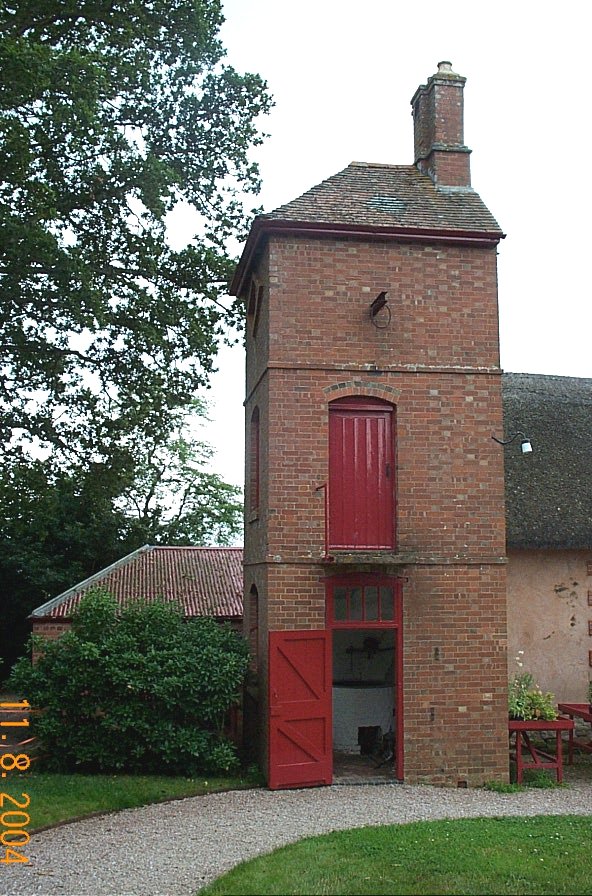| A La Ronde Exmouth Devon |

| This unusal shaped 16 sided building is located near Exmouth in Devon with extensive views looking over the northern side of the River Exe estuary. The building was constructed in the 1790's for the two Parminster sisters Mary and Jane, and became a property of National Trust in 1991. |
| Very
little of the original Victorian heating system
remains in the building. The system installed was
a low pressure wet heating system with cast iron
distribution pipework serving 5 box-ended pipe
coil heaters. Sadly the only one of the pipecoil
heaters to survive in the house can be seen in the
Library. The other 4 heaters were removed and
disposed of as recently as the 1970's. The heating system is considered to have been installed during the 1860's or 1870's, by dating the style of the pipe heater and boiler. Unfortunately all the records of the property which were held in the Devon County Record Office archives in Exeter were destroyed due to enemy action in WWII. |
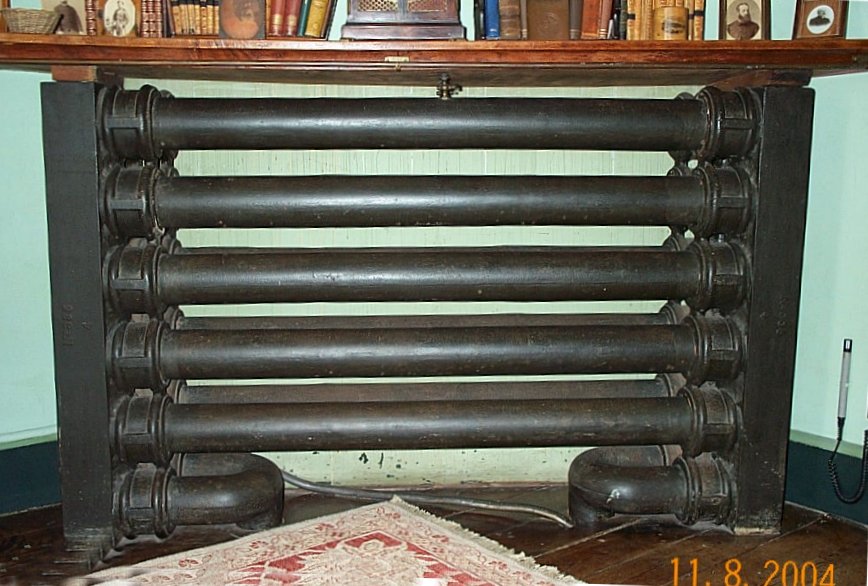 |
external socket pattern with rectangular box-ends
| The wrought or cast iron boiler which is of the "set into brickwork" pattern still remains untouched in a sub-basement room. The boiler appears to be of the type called "chambered with terminal end" and has the name "Parkin & Sons Exeter " inscribed on the cast iron front plate. This firm was still trading in 1939. |
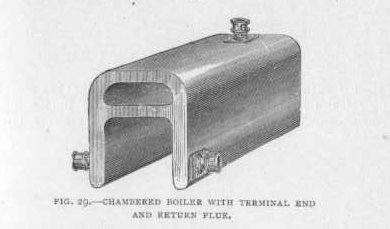 |
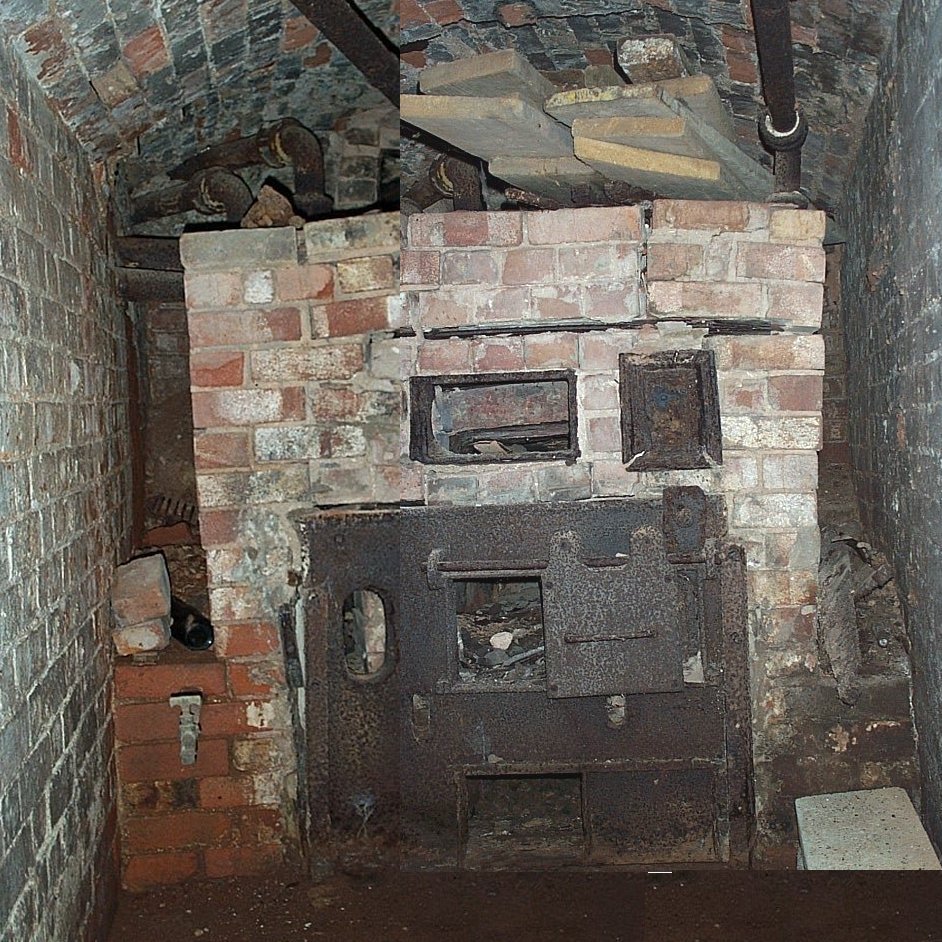 |
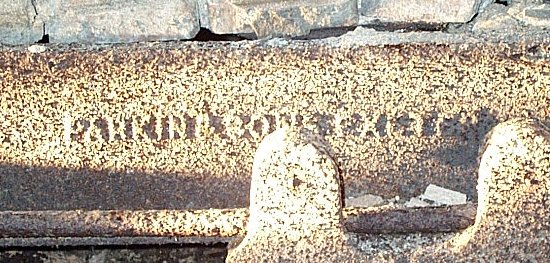 |
|
A most unusual
item of equipment noted in the heating
system is a pipe coil
comprised solely of cast iron socket &
spigot joints fitted under
the timber seat in the Entrance Hall.
Note the purpose made timber chocks to act
as supports. No similar
type of heating coil has so far been found
in any other National Trust property.
|
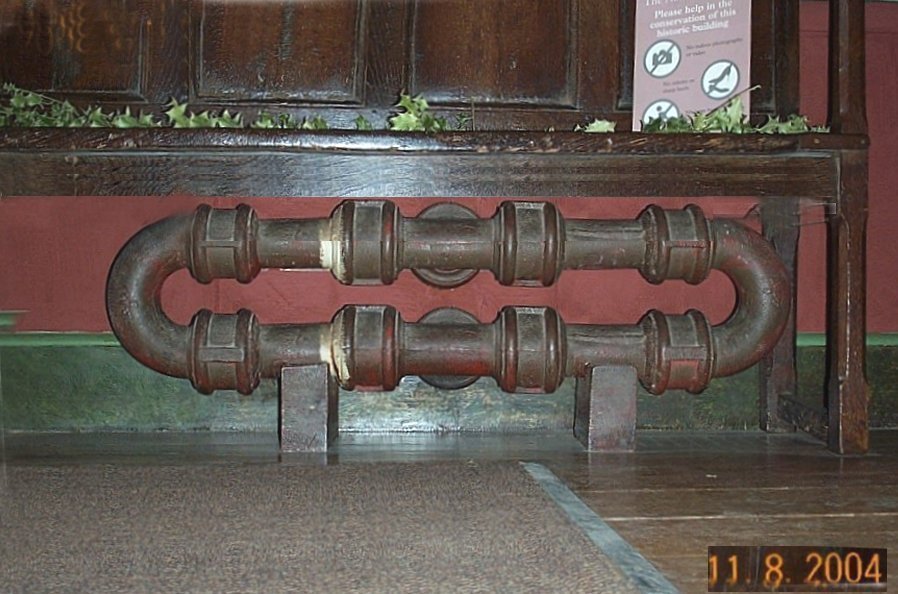 |
|
The original gas
distribution pipework system with wall lights, complete
with glass globes and mantles is still
operational . Other replica gas lighting
fittings have been added to the system to
match with the original styles.
|
Two types
of gas lamps
- Pendant and Wall |
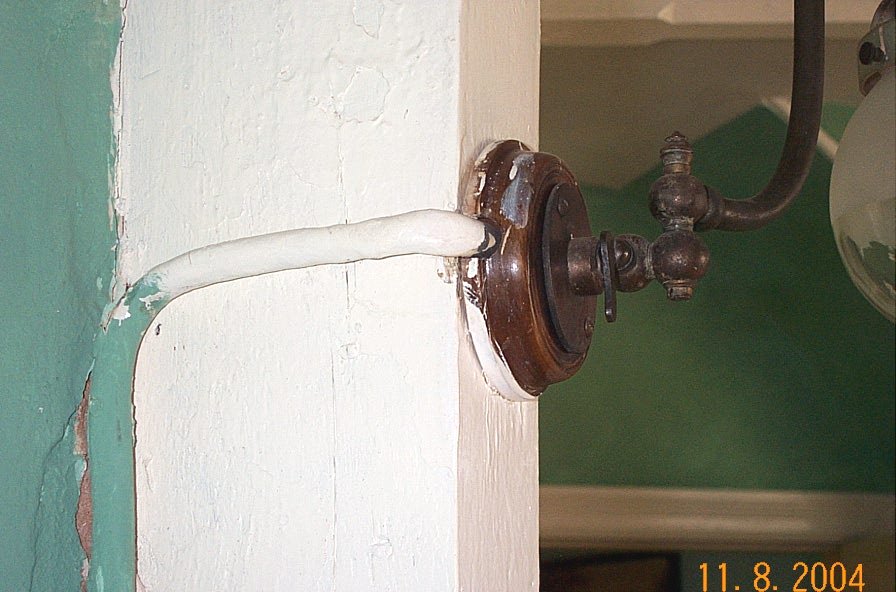 |
RAIN WATER HARVESTING
| On the North side of the building is a Cob and Thatch Barn. This building has the unusual feature of a rain water and ground water collection system. Situated at both ends of the building are two large underground storage chambers which are inter-connected by a salt glazed balance pipe. Both storage chambers have a pre-chamber which was filled with coke presumably to act as some form of cleansing filter. The purpose of the pre-chamber is unknown, so any suggestions about a possible reason would be welcomed by the Heritage Group. |
